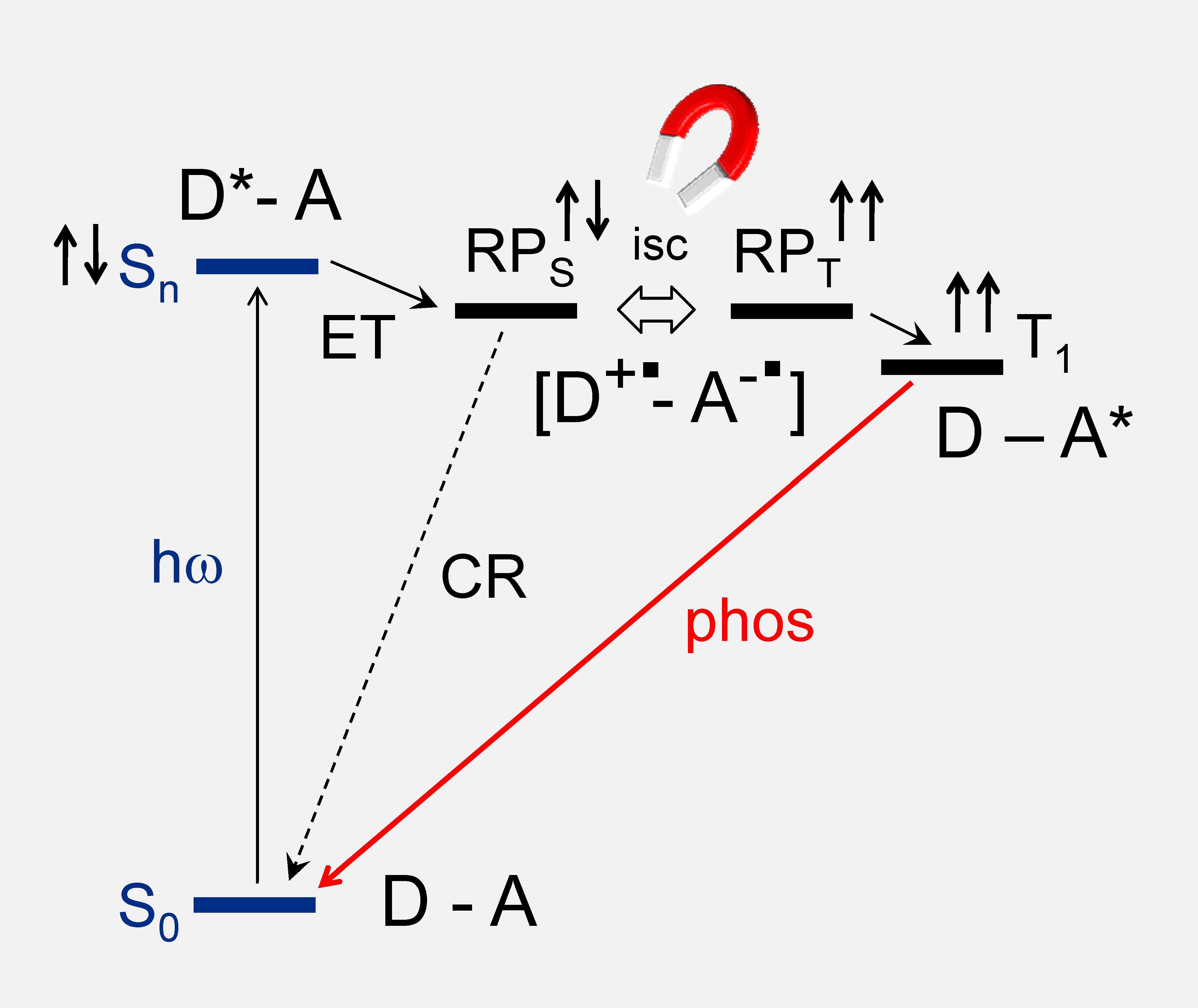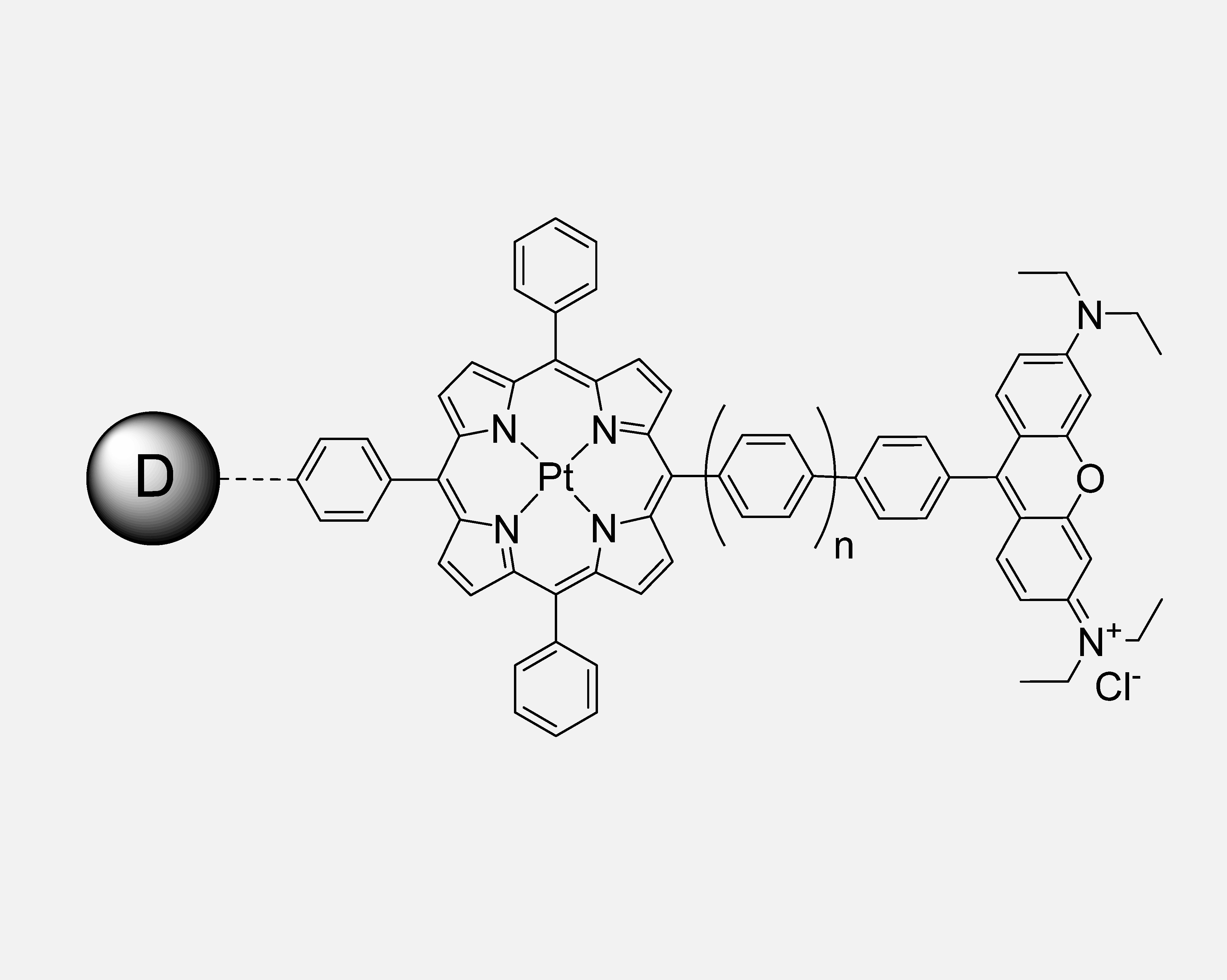Magnetic field effects (MFE) on luminescence
The ability to control molecular excited states by magnetic fields presents interest for many areas of technology and medicine. For example, in optical imaging magnetic modulation of emission may help to enhance spatial resolution. In medicine, localization of photosensitizer activity to a particular region within the body by magnetic field could be a valuable asset in photodynamic therapy. Magnetic Fields Effects (MFE) on chemical dynamics have been known since the 1960's and underlie such important phenomena as Chemically-Induced Dynamic Nuclear Polarization (CIDNP). Currently, MFE are being examined as one of the mechanisms underlying avian magnetoreception, presenting an important example of quantum effects in biology.
We use the fundamental knowledge about electron spin dynamics in radical pairs (RP), formed transiently upon light activation of multichromophoric systems, to design and synthetically construct molecules with defined energy and electron transfer pathways in order to impart the magnetic sensitivity of luminescence. This is a relatively new direction in our laboratory, and it stems from our previous work on two-photon-enhanced phosphorescent probes for oxygen [1, 2]. After examining various porphyrin-based phosphorescent systems [3, 4, 5], we recently designed the first example of a single multichromophoric molecule in which room-temperature phosphorescence can be modulated up to 12% using the magnetic field of a small toy magnet. Research in this area is a combination of advanced synthetic chemistry and an array of spectroscopic techniques, including nano- and femtosecond transient absorption, time-resolved luminescence and time-resolved electron paramagnetic resonance. Whenever possible we collaborate with laboratories possessing expertise and technical capabilities in these methods. Otherwise, we build our own instrumentation.
 A possible scheme for implementing magnetic control of phosphorescence in a donor-acceptor (D-A) system.
A possible scheme for implementing magnetic control of phosphorescence in a donor-acceptor (D-A) system.
 Pt porphyrin-rosamine system, potentially extendable by a donor moiety (D), that may be able to operate according to the scheme (left).
Pt porphyrin-rosamine system, potentially extendable by a donor moiety (D), that may be able to operate according to the scheme (left).
 MFE on phosphorescence in a recently designed multichromophoric system and underlying processes responsible for spin mixing in the RP.
MFE on phosphorescence in a recently designed multichromophoric system and underlying processes responsible for spin mixing in the RP.
University of Pennsylvania
Department of Biochemistry and Biophysics, Perelman School of Medicine
Department of Chemistry, School of Arts and Sciences
Philadelphia, PA 19104
United States
The Vinogradov Group website
Copyright: VINOGRADOVLAB.ORG